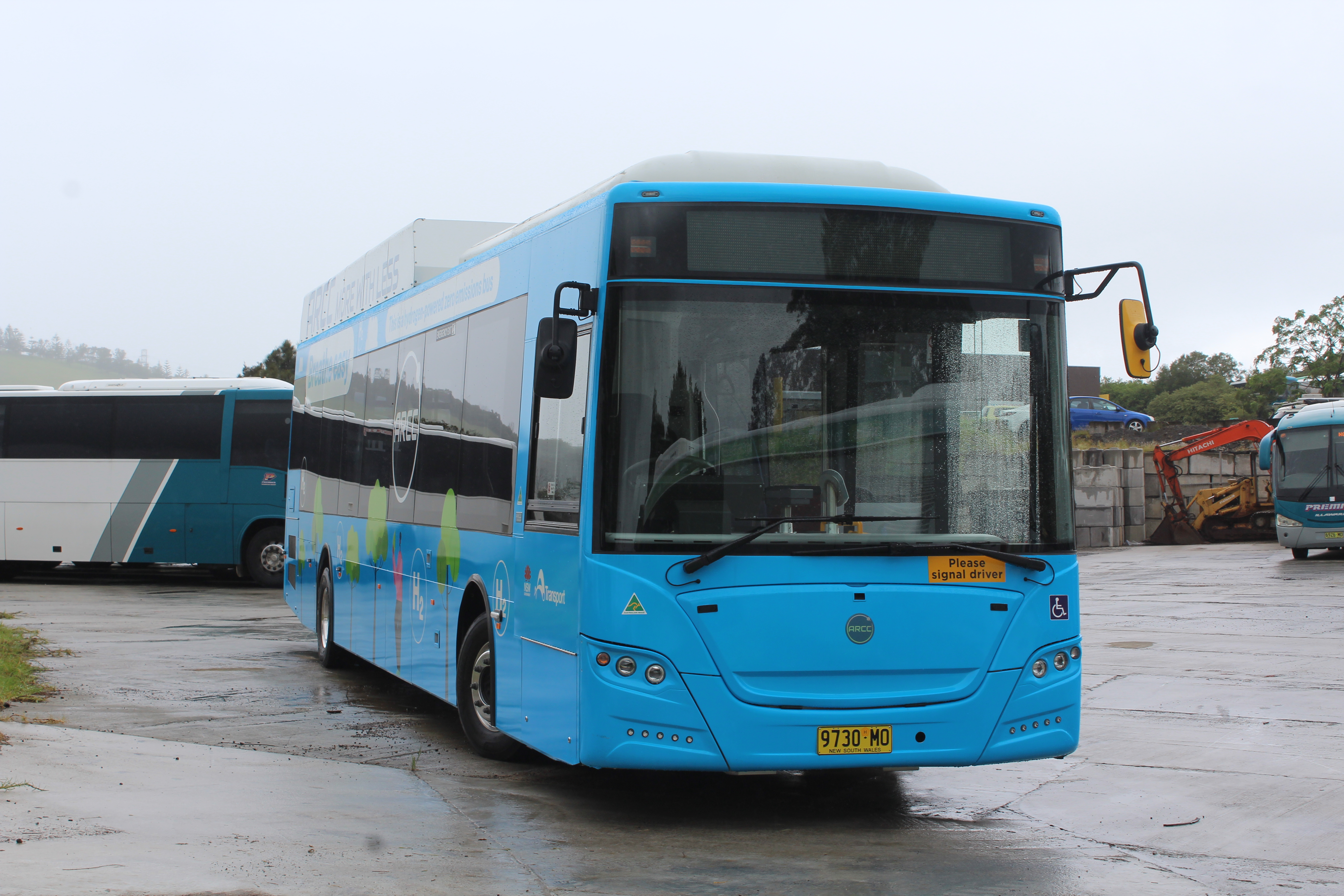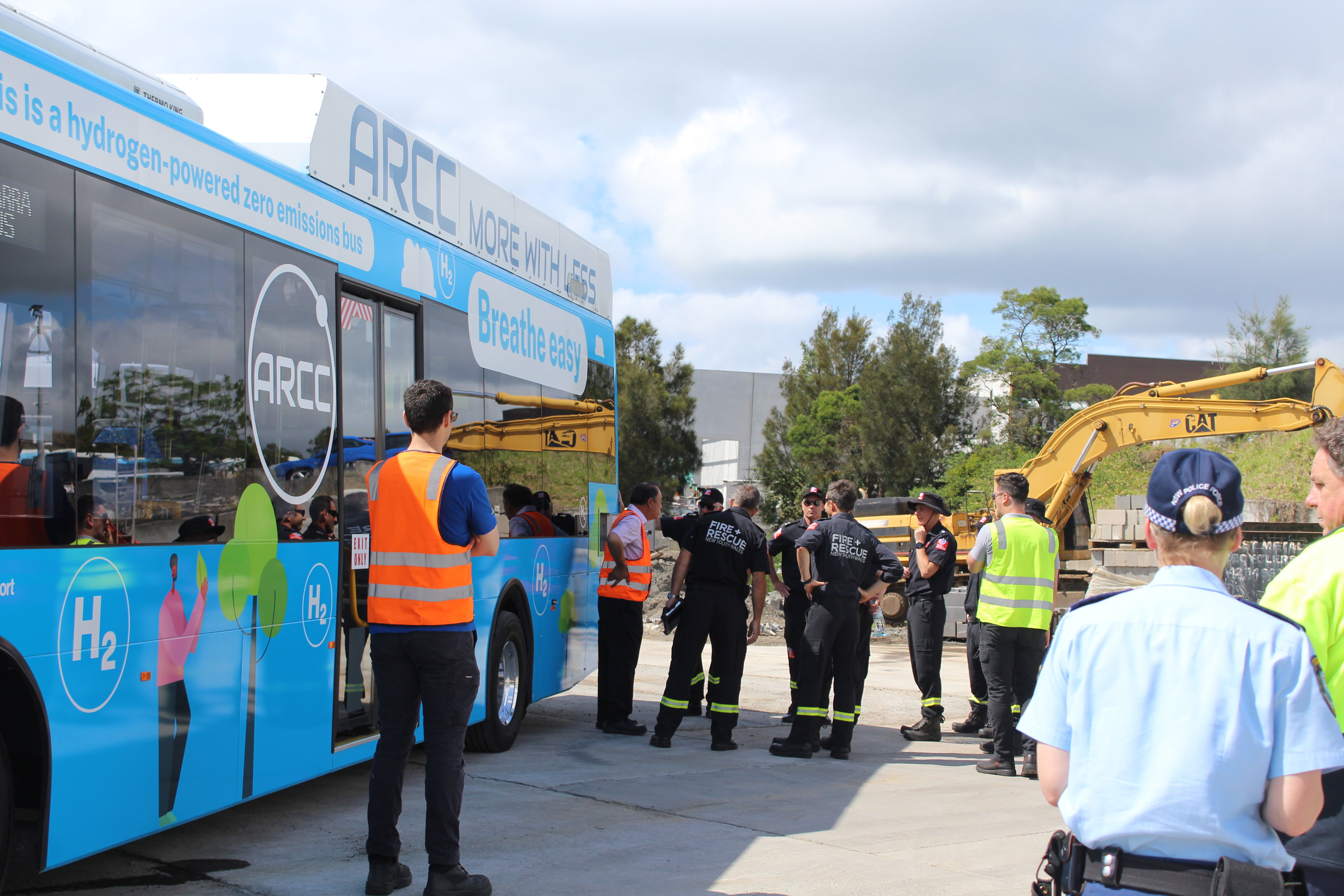The zero emission Australian bus - Characteristics
Premier Illawarra - Hydrogen Bus Project
- LIGHTWEIGHT DESIGN: The only Australian designed full length aluminium chassis. Two tonnes lighter GVM, without compromise.
- NEXT-GENERATION ENERGY: 3rd generation battery systems. Higher power density, smaller packs, and fast charge enabled.
- MODULAR PACKAGES: Streamlined bolted assembly. Full-electric and hydrogen-electric configurations from the same modular frame.
- ADR COMPLIANT: Australian designed & built. Fully ADR compliant.
Traditional Fuel Car Emissions VS Hydrogen Bus Emissions
Greenhouse Gas Emissions from Fuel-Powered Vehicles
Fuel-powered vehicles, especially those using gasoline or diesel, emit several key greenhouse gases:
- Carbon Dioxide (CO2): The primary greenhouse gas emitted by fuel-powered vehicles. CO2 is produced when carbon in fuel combines with oxygen in the air during combustion. It is the most significant contributor to global climate change from vehicles.
- Carbon Monoxide (CO): While not a greenhouse gas itself, CO affects the concentration of greenhouse gases in the atmosphere. It reacts with oxidants in the air, thereby reducing the capacity to oxidize methane and indirectly increasing the atmospheric lifespan of methane.
- Nitrogen Oxides (NOx): This includes nitric oxide (NO) and nitrogen dioxide (NO2). These gases can react with other substances to form ozone and indirectly contribute to the greenhouse effect.
- Volatile Organic Compounds (VOCs): A group of different compounds that can form ozone through photochemical reactions in the atmosphere, thereby indirectly enhancing the greenhouse effect.
- Trace Methane (CH4): Although fuel-powered vehicles emit relatively small amounts of methane, it is a very potent greenhouse gas, and even small emissions can impact the climate.
In summary, fuel-powered vehicles contribute significantly to climate change not only through the direct emission of greenhouse gases like CO2 but also indirectly via emissions of CO, NOx, and VOCs. With increasing global focus on reducing greenhouse gas emissions, the development of electric vehicles and other alternative energy vehicles is gaining more attention.
Please Try to Refresh, if the chart is shrank
Traditional Fuel Car Emissions
Hydrogen Bus Emissions

Lightweight, durable, and ADR compliant.
All without compromising on passenger safety and capacity.
The zero emission Australian bus - Parts
Premier Illawarra - Hydrogen Bus Project
- Hydrogen Fuel Cell Engine: At the core of the bus, an efficient fuel cell engine converts hydrogen into electricity, propelling the bus with clean energy.
- High-Pressure Hydrogen Tanks: Equipped with advanced high-pressure tanks, the bus safely stores hydrogen fuel for extended range and performance.
- Electric Drive Motor: Powered by an electric motor, the bus offers smooth acceleration and high torque for a responsive driving experience.
- Regenerative Braking System: Features a regenerative braking system that recaptures kinetic energy, increasing efficiency and reducing wear.
- Hydrogen Fueling System: Incorporates a state-of-the-art hydrogen fueling system that allows for fast refilling and minimal downtime.
- Energy Storage Units: Utilizes cutting-edge batteries or supercapacitors to store excess energy from the fuel cell and braking, optimizing power use.
- Advanced Ventilation System: Designed with a sophisticated ventilation system to ensure safe dispersal of hydrogen in the event of a leak.









